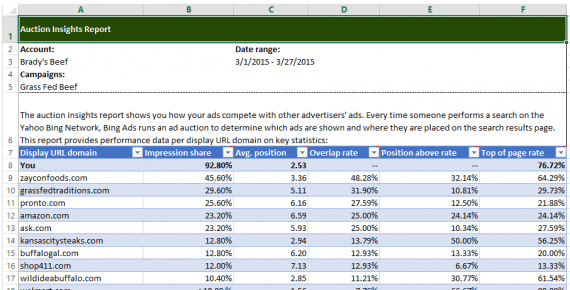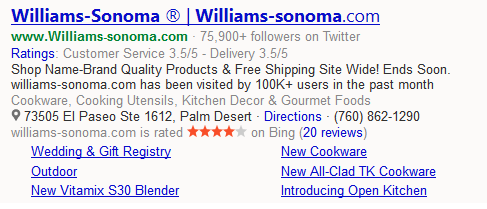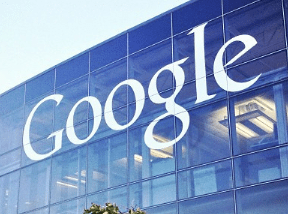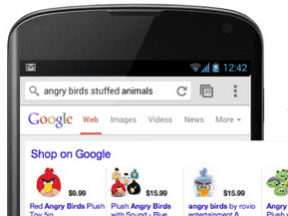The dominance of Google hit home for me this past week as I was listening to a phone call for one of my clients. The representative on the phone was taking an order from a customer and this dialogue occurred.
Rep: “How did you hear about us?”
Customer: “The Internet.”
Rep: “What site were you on?”
Customer: “Google.”
However, we use call tracking and I know that this customer had searched on Yahoo, not Google. He clicked our ad on Yahoo, and then called the unique tracking number for Yahoo. But in this customer’s mind, any search engine was Google.
If you’re a pay-per-click advertiser who uses Google AdWords, but not Bing Ads, then you missed this shopper. He was making a purchase worth several thousand dollars.
According to comScore’s February 2015 U.S. Desktop Search Engine Rankings, Google gets 64.5 percent of search volume. However, Microsoft sites account for 19.8 percent and Yahoo sites account for 12.8 percent.
Bing Ads serves pay-per-click ads for both Yahoo and Microsoft sites (i.e., Bing). So by being on the Bing Ads platform, you are covering both sites — 32.6 percent of the total desktop search volume in the U.S.
Getting on Bing Ads Is Easy
Microsoft presumably recognizes that AdWords is dominant in the paid search industry, as Bing Ads allows from the importing of AdWords’ campaigns.
When you are logged into Bing Ads, the option to import is in the main header. Click that and top option is “Import from Google AdWords.”

Bing Ads “Import Campaigns.”
You can import an entire account or just one campaign. The 5-step process is easy. It is the simplest way to get your existing AdWords efforts into Bing Ads, so that you can get your ads in front of the 32.6 percent of searchers that you’re currently missing out on.
Bing Ads Can Be More Cost Effective
Covering your bases is good, but what if you could actually get better results? Many advertisers simply ignore Bing Ads. Thus, there is less competition on that platform. Since Bing Ads and AdWords are auction-based, fewer advertisers means lower costs. Here are some real numbers, from a real advertiser, in a highly competitive industry.
AdWords Campaign A
- Impressions: 22,117
- Average cost per click: $17.29
- Average position: 3.4
Bing Ads Campaign A (Imported from AdWords)
- Impressions: 3,285
- Average cost per click: $11.27
- Average position: 2.1
First, you’ll notice that the Bing Ads campaign has fewer impressions — 13 percent of the total comes from Bing Ads and 87 percent from Google. Second, notice that the cost per click is a roughly one-third lower for Bing Ads, but the average position (where the ad appears on the page) is actually better.
In short, this advertiser pays roughly 35 percent less per click and instead of floating around the third or fourth positions, he is mostly in the second spot. That’s powerful math. So, for this company, we spend as much in Bing Ads as we can, and then use the remaining budget in AdWords.
Bing Ads Offers Helpful Competitive Research
You can find out what your competitors are up to on Bing Ads through a free tool call Bing Ads Intelligence. It is an Excel extension, so after downloading you launch Excel and there will be a new tab.
You can do all kinds of research here. In fact, I could write an entire post about the available options. One of my favorites is “Auction Insights.” You pick a date range, select your campaign, and it tells you who your top competitors are and how you stack up against them.
Here is an Auction Insights report for a small campaign I run for my dad, who sells grass-fed beef in Idaho and Utah.

Example of Bing Intelligence: Auction Insights.
Auction Insights is powerful information that is free to the advertiser.
Bing Ads Experiments with Ad Formats
Bing Ads aggressively experiments with the way ads appear to searchers. One of the ways it does this is through annotations, such as the following.
- Merchant ratings
- Favicon
- Smart annotations
- Twitter annotations
- Dynamic sitelink annotations
- Top ad annotations
- Long ad title annotations
These all offer ways to make your ad stand out, and win the click. But the best part is that your ad can have more than one annotation showing at a time. TheSEMPost addressed this last week, noting a Williams-Sonoma ad on Bing with eight annotations.
All of those annotations are displayed for free. Someone who clicks this ad will likely be more qualified and therefore, more valuable.
The Case for Bing Ads
If you advertise with Google and you have been ignoring Bing Ads, this is your invitation to get started. It’s easy to set up because you can simply import your efforts from AdWords. There is less competition. You’ll get better positions for the same or less money. Bing has helpful tools to aid your research. And you can show many annotations with lots of information for no extra charge.






